2008.02.27 ESMD shape library
ESMD shape library
Shower Widths for Monte Carlo and Data
Description
Hal did a comparison of the widths of the shower shapes between Monte Carlo and data. Below is a description of what was done.
I took the nominal central value, either from the maxHit or the
nominal central value, and added the energy in the +/- 12 strips. Then I
computed the mean strip (which may have been different from the nominal
central value!!). I normalized the shape to give unit area for each smd
cluster, and added to the histograms separately for U and V and for MC and
data (= Will's events). I did NOT handle Will's events correctly, just
using whatever event was chosen randomly, rather than going through his
list sequentially. Note I ran 1000 events, and got 94 events in my shower
shape histos.
So, there are several minor problems. 1) I didn't go through Will's
events sequentially. 2) I normalized, but perhaps not to the correct 25
strips, because the mean strip and the nominal strip may have differed.
3) there may have been a cutoff on some events due to being close to one
end of the smd plane (near strip 0 or 287). My sense from looking at the
plots is that these don't matter much.
The conclusion is that the MC shape is significantly narrower than
the shape from Will's events, which is obviously narrower than the random
clusters we were using at first with no selection for the etas. Hence, we
are not wasting our time with this project.
- Monte Carlo U shower shape
- Monte Carlo V shower shape
- SMDU shower shape (Will's selection)
- SMDV shower shape (Will's selection)
- Energy Asymmetry
- Index of Library Entry
Decsription of Pythia Sample
A few histograms were added to the code:
- MC is Pythia gamma-jet at partonic pT 9-11 GeV with gamma in the Endcap
- Data is from Will Jacobs golden events from Weihong sample
- Require no conversion
- Require all hits from direct photon in same sector
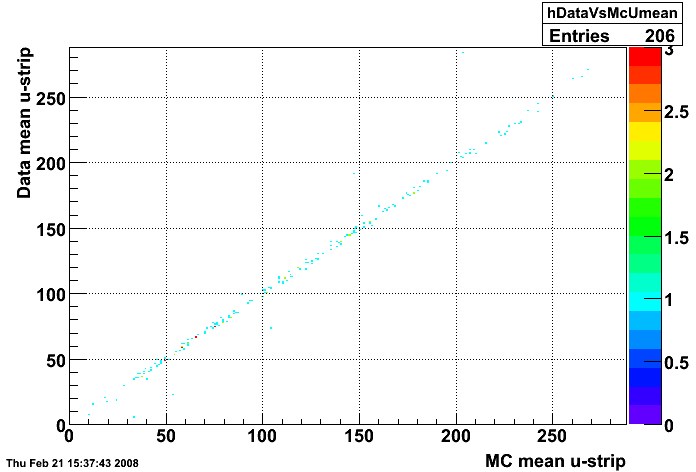
Figure 1:
Data vs. MC mean u-strip
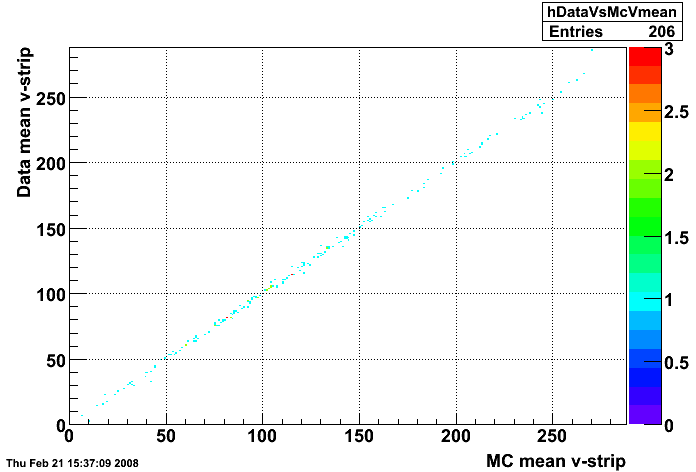
Figure 2:
Data vs. MC mean v-strip
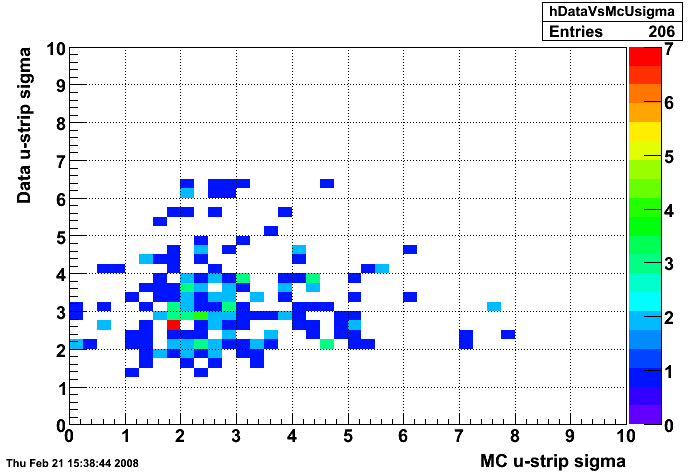
Figure 3:
Data vs. MC u-strip sigma
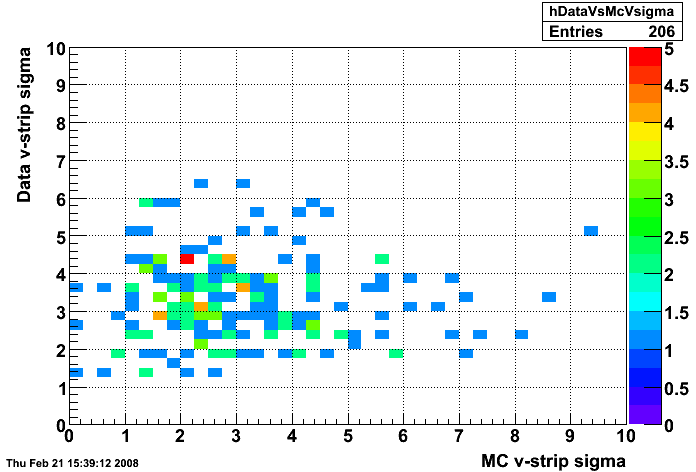
Figure 4:
Data vs. MC v-strip sigma
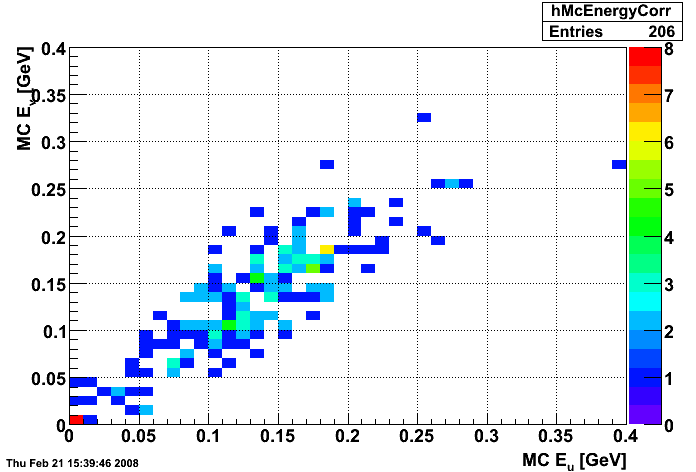
Figure 5:
MC E
v
vs. E
u
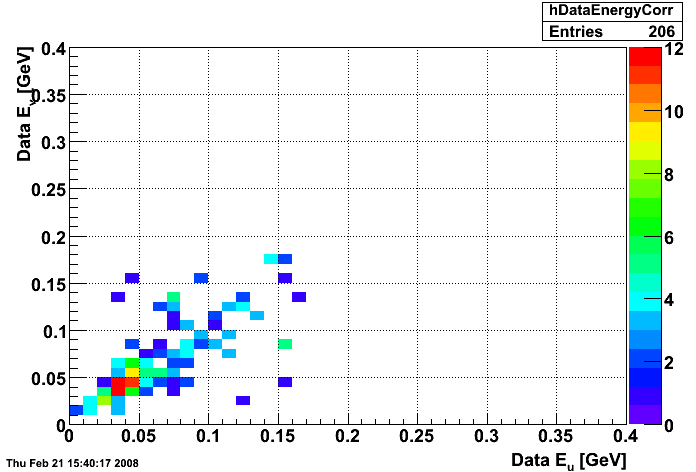
Figure 6:
Data E
v
vs. E
u
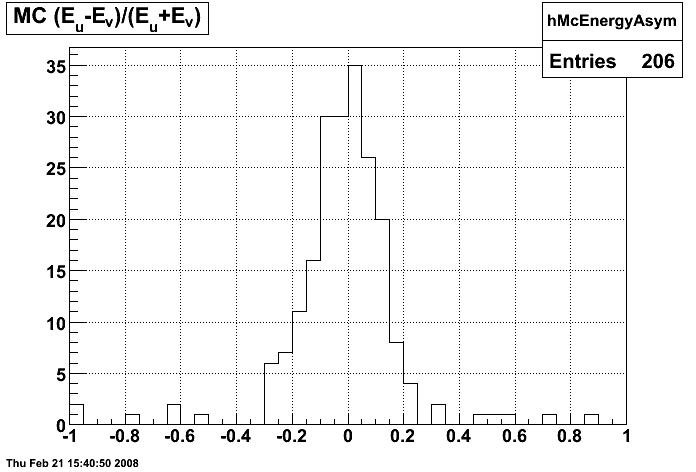
Figure 7:
MC energy asymmetry in SMD planes
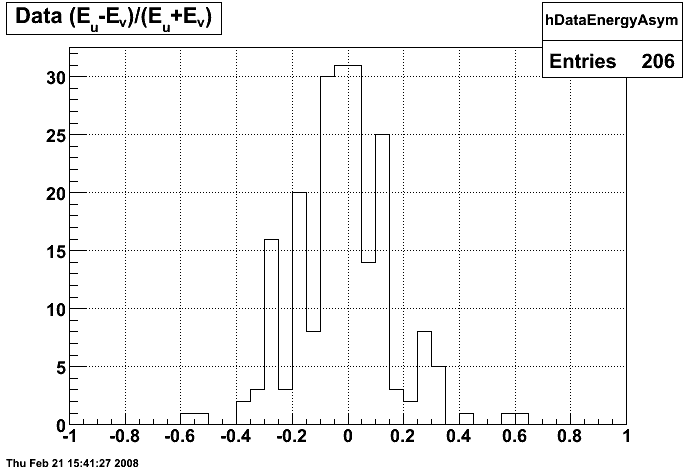
Figure 8:
Data energy asymmetry in SMD planes
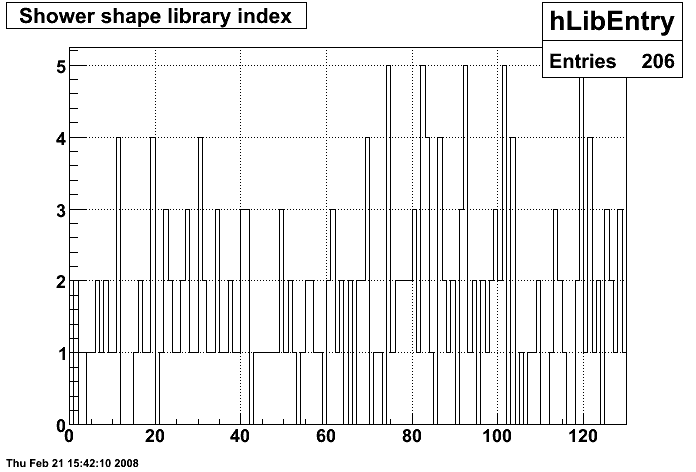
Figure 9:
Shower shape library index used (picked at random)
Single events shower shapes are displayed in
or
.
- green = projected position of direct photon in the Endcap
- blue = Monte Carlo SMD response
- red = Data SMD response
Hal Spinka Pibero Djawotho Last modified Wed Feb 27 09:51:27 EST 2008